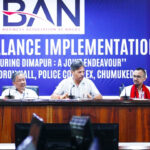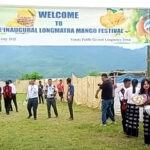Dr. E. Benrithung Patton in his book “Political Participation and Political Attitude: A study of Mokokchung District” introduces the readers to various concepts of ‘political participation’ and continues with the understanding that political participation refers to the activity that is designed to have an impact on governmental decision making and actions. Ideally, political participation includes a broad range of activities through which people develop and express their opinions on the world and how it is governed, and try to take part in and shape the decisions that affect their lives.
In a democracy, voting is one way of political participation, if not the most potent way. Interestingly, the author found very high voter turnouts in his study. It was discovered that there was a 93% voter turnout among the age group of 45-59 years. It was also discovered that the voter turnout was 80% among the age group of 18-29 years. It was also discovered that voter turnout among married people (89.56%) was higher as compared to the unmarried ones (82.92%).
These are interesting findings that shed light on how people participate in the political process. Research, analysis and survey based on facts and figures are important for policy formulation and its successful implementation. Here, such a datasheet is important for political analysts to understand why and how voters vote. The author studied 15 polling stations with respondents from the 2014 electoral roll under 5 assembly constituencies in Mokokchung district. In an ideal scenario, this survey could have been a potent tool for vote garnering by political parties and candidates in the next election. Unfortunately, there is a flaw – a flaw that is not attributed to the author.
It is common knowledge that the number of voters in any given village has been manipulated and inflated. Although there are mechanisms in place to check or detect bogus names in the electoral roll, there are glitches in the system that are difficult to troubleshoot and are being exploited by the people. This invariably ends up with every village trying to inflate the numbers to the maximum extent possible.
Patton’s book makes an expansive contribution to the academic discourse and to the citizens in understanding the voter pattern and extent of political participation in Mokokchung district. However, it is difficult to say if the author’s findings can be considered for any practical use because of the inherent flaw that is plaguing the very process of political participation of the voters in Mokokchung. In the electoral roll, numbers do lie.



